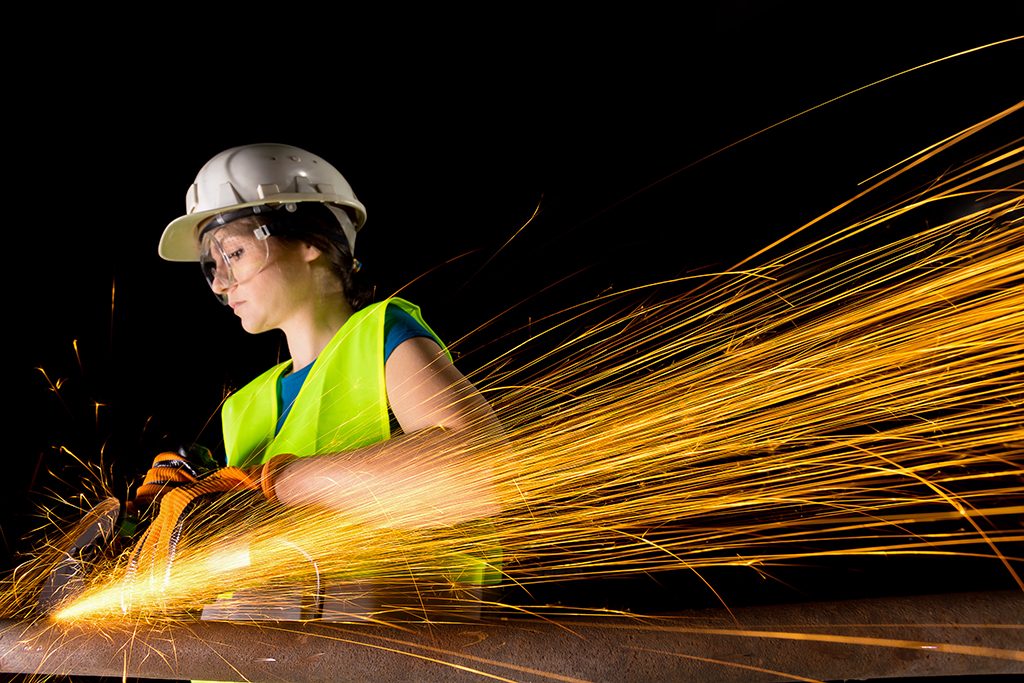Last Updated on February 12, 2021 by admin

Nina Hansen May 18, 2020
“What are you doing here? Why don’t you go find some rich sugar daddy?”
With those words stinging her ears, the first tradeswoman hired under the equity provisions of the Vancouver Island Highway construction contract walked over to the piece of heavy equipment she was tasked to operate, hopped inside, and started her workday.
By the end of the project, the tradeswoman had won over her boss – an initial detractor – because she did her job well and she was the only worker who never rolled a truck.
That was 25 years ago, a narrative from the academic journal Labor Studies, which looked at the success of training and equity initiatives on the Island Highway construction under a Project Labour Agreement. The conclusion of the researchers? These initiatives were “stunningly successful.”
If it seems like I’m revisiting old news, I’m not – it’s as relevant today as it ever was. Women still face bullying and harassment, and we still haven’t moved the dial on women’s representation in the skilled trades. They represent less than five per cent of this workforce, and it’s been that way for decades.
But the Vancouver Island Highway project, which required equity hiring of women and Indigenous workers, did move that dial. Women represented nine per cent of the workforce during peak summer periods, and while that’s still far short of women’s representation in the general population, it’s nearly double the percentage of tradeswomen on construction projects overall. Meanwhile, Indigenous workers accounted for as much as 11 per cent of the workforce.
Despite these successes, the Vancouver Island Highway was the first and last public infrastructure project of its kind to support this degree of equity hiring – until 2018 when the provincial government announced a Community Benefits Agreement on the Pattullo Bridge replacement, the widening of Highway 1 between Kamloops and Alberta, and the Broadway SkyTrain extension.
Like its predecessor on the Island Highway, the Community Benefits Agreement (CBA) mandates priority hiring of tradeswomen, Indigenous workers and residents. There are also commitments to apprenticeship ratios and safety and cultural competency training. If these seem like excessive goals for public construction projects (most people just want to get where they need to go without constant gridlock and nothing more), they’re not. The active, purposeful development of a future skilled trades workforce is key to managing our skilled trades shortage.
History tells us this won’t happen naturally.
The equity initiatives on the Vancouver Island Highway succeeded because they were not optional. Put simply, opportunity alone is not enough to overcome the enormous barriers faced by people traditionally excluded from construction projects. In fact, when jobs were initially posted for VIHP, few people from the targeted equity groups even applied; instead, government needed to actively recruit people from underrepresented groups, and the employers needed to embrace and abide the equity hiring provisions that were codified in the Project Labour Agreement.
Now, the Island Highway was built when unemployment was close to 10 per cent. Today, it’s less than five per cent. Suffice to say, a robust construction sector needs women and that means initiatives to attract, recruit and retain tradeswomen are more important now than ever before.
We support the equity hiring provisions of the CBA because status quo isn’t good enough anymore, and we can’t afford to leave our future to chance.
Nina Hansen is executive director of the BC Centre for Women in the Trades, which aims to increase the retention and advancement of women in the trades through targeted supports and programs.
